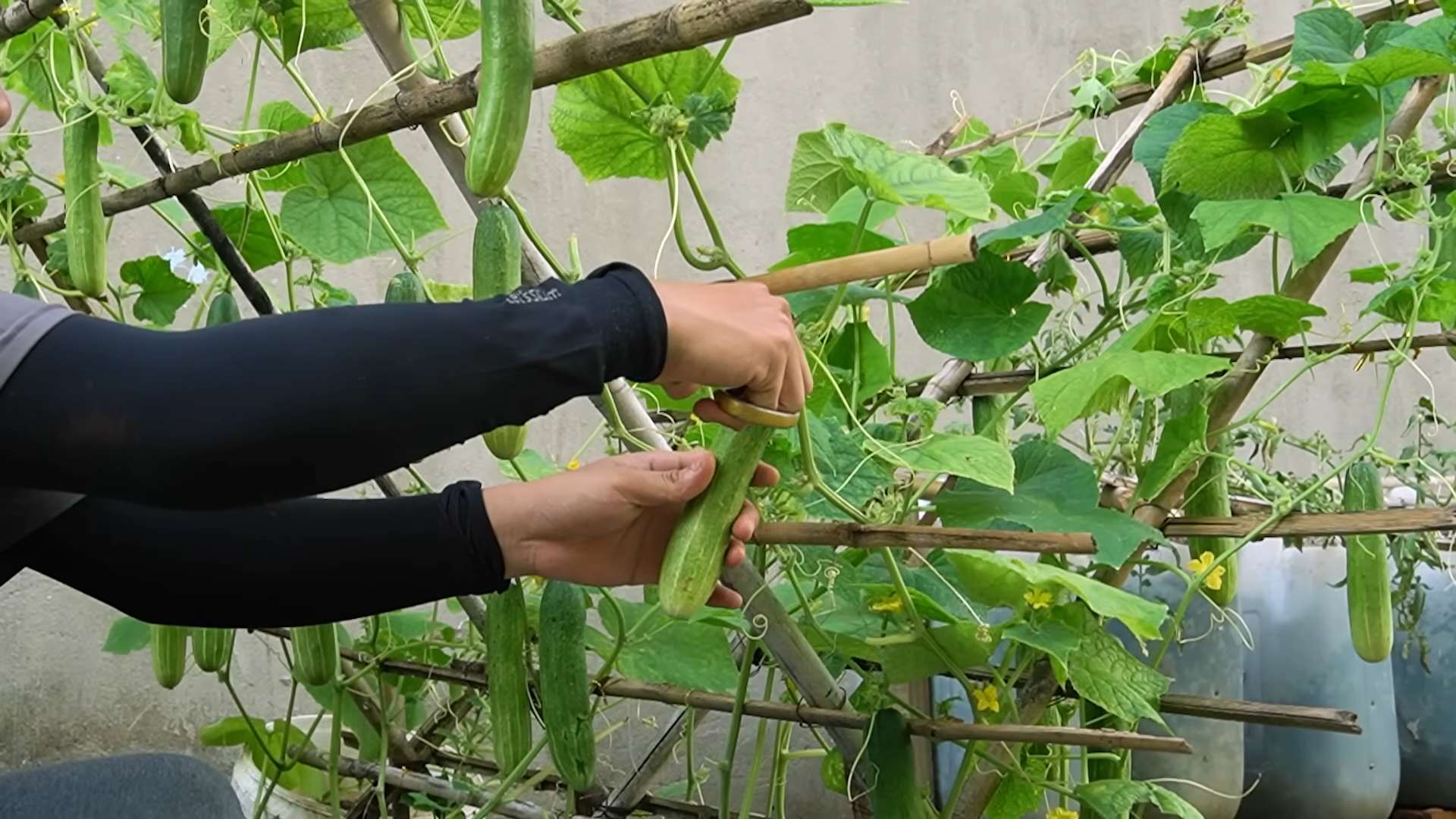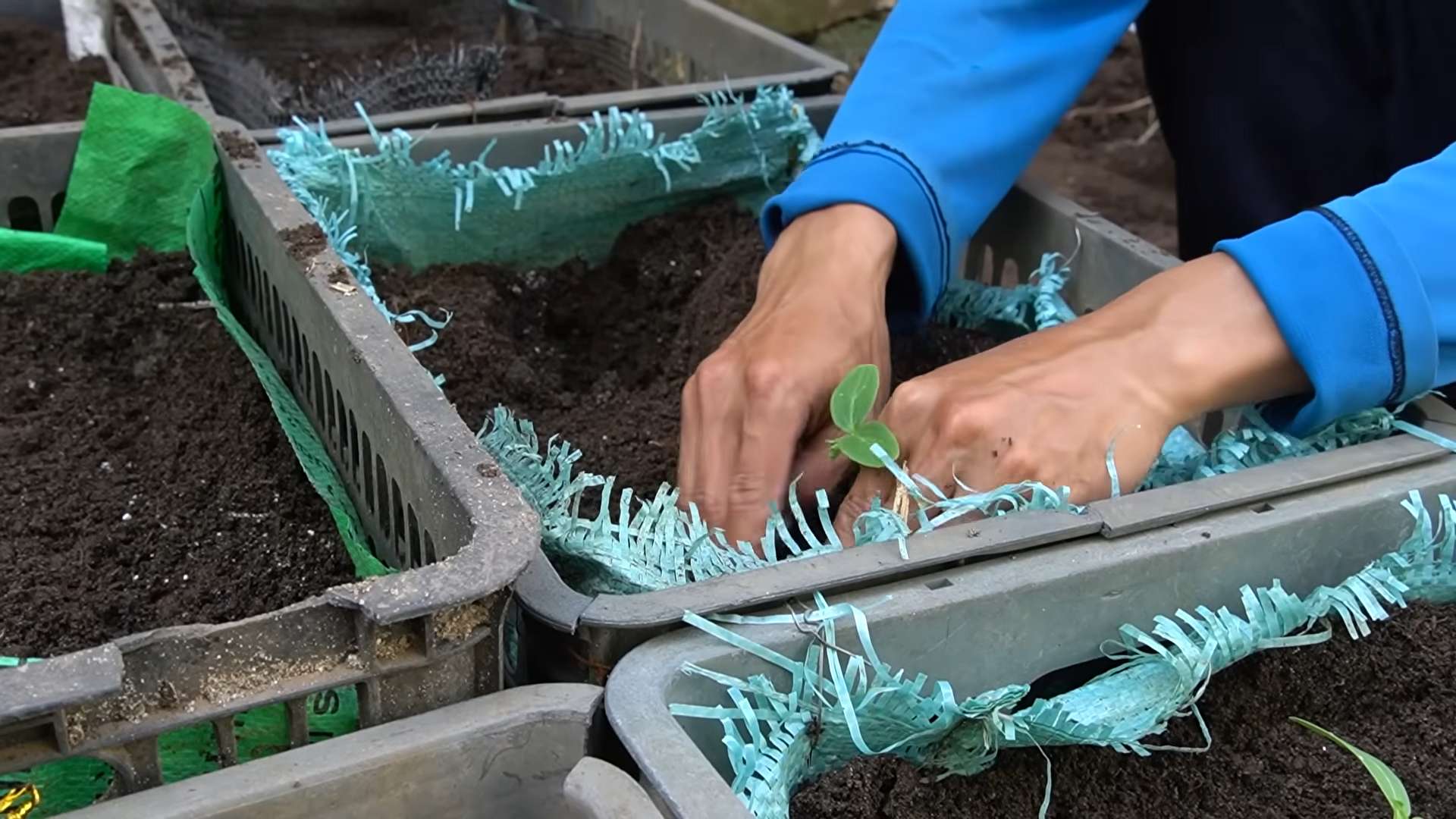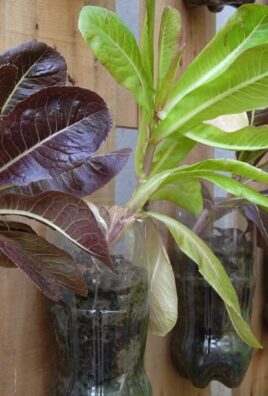Grow Cucumbers at Home – imagine plucking crisp, refreshing cucumbers straight from your own backyard! There’s nothing quite like the satisfaction of nurturing a plant from seed to harvest, and cucumbers are surprisingly easy to cultivate, even if you’re a beginner gardener. Forget those bland, store-bought cucumbers; get ready for a burst of flavor and freshness you won’t believe!
For centuries, cucumbers have been a staple in diets around the world. Originating in India, they’ve traveled across continents, becoming a beloved ingredient in salads, pickles, and countless other dishes. Their crisp texture and mild flavor make them incredibly versatile, and their high water content makes them a refreshing treat, especially during hot summer months. But why settle for commercially grown cucumbers when you can easily grow cucumbers at home, knowing exactly what went into their cultivation?
In this article, I’m going to share some simple yet effective DIY tricks and hacks that will help you achieve a bountiful cucumber harvest, regardless of your gardening experience or the size of your space. Whether you have a sprawling garden or just a small balcony, I’ll show you how to create the perfect environment for your cucumber plants to thrive. From choosing the right varieties to dealing with common pests and diseases, I’ve got you covered. So, grab your gardening gloves, and let’s get started on this exciting journey to homegrown cucumber goodness!

Grow Your Own Delicious Cucumbers: A Beginner’s Guide
Hey there, fellow gardening enthusiasts! I’m so excited to share my tried-and-true method for growing cucumbers right at home. There’s nothing quite like the crisp, refreshing taste of a homegrown cucumber, and trust me, it’s easier than you might think! This guide will walk you through every step, from choosing the right variety to harvesting your bounty. Let’s get started!
Choosing the Right Cucumber Variety
Before we dive into the nitty-gritty, let’s talk about cucumber varieties. There are a ton of options out there, and the best one for you will depend on your space, climate, and what you plan to do with your cucumbers.
* Slicing Cucumbers: These are your classic cucumbers, perfect for salads and sandwiches. They typically have smooth, dark green skin. Some popular slicing varieties include ‘Marketmore 76’, ‘Straight Eight’, and ‘Burpee Hybrid’.
* Pickling Cucumbers: As the name suggests, these are ideal for making pickles. They’re usually shorter and stubbier than slicing cucumbers, with bumpy skin. ‘National Pickling’, ‘Boston Pickling’, and ‘Bush Pickle’ are great choices.
* Burpless Cucumbers: These varieties are bred to be less bitter and easier to digest. They often have thinner skins. ‘Sweet Slice’, ‘Armenian’, and ‘English Telegraph’ are popular burpless options.
* Bush Cucumbers: If you’re short on space, bush cucumbers are your best bet. They grow in a compact, bush-like form, making them perfect for containers or small gardens. ‘Spacemaster’, ‘Bush Champion’, and ‘Salad Bush’ are excellent choices.
I personally love growing ‘Marketmore 76’ for slicing and ‘National Pickling’ for, well, pickling! But feel free to experiment and find your favorites.
Preparing Your Cucumber Growing Space
Cucumbers are sun-loving plants, so you’ll need to choose a spot that gets at least 6-8 hours of direct sunlight per day. They also need well-drained soil that’s rich in organic matter.
* Sunlight: As I mentioned, cucumbers need plenty of sun. Make sure your chosen spot isn’t shaded by trees or buildings.
* Soil: Cucumbers thrive in soil that’s loose, well-drained, and fertile. If your soil is heavy clay or sandy, you’ll need to amend it with compost or other organic matter.
* Support: Most cucumber varieties are vining, meaning they’ll need something to climb on. You can use a trellis, fence, or even a tomato cage. Bush varieties don’t need support, but they can still benefit from it.
* Watering: Cucumbers need consistent moisture, especially during hot weather. Aim to water deeply and regularly, keeping the soil consistently moist but not waterlogged.
Planting Your Cucumber Seeds or Seedlings
You can start cucumber seeds indoors or sow them directly in the garden. I usually start mine indoors about 3-4 weeks before the last expected frost.
Starting Seeds Indoors:
1. Choose Your Containers: Use small pots or seed trays filled with seed-starting mix.
2. Sow the Seeds: Plant the seeds about 1/2 inch deep.
3. Water Gently: Keep the soil moist but not soggy.
4. Provide Warmth: Cucumbers need warm temperatures to germinate. Use a heat mat or place the containers in a warm spot.
5. Provide Light: Once the seedlings emerge, provide them with plenty of light. A sunny windowsill or grow light will work.
6. Harden Off: Before transplanting the seedlings outdoors, you’ll need to harden them off. This means gradually exposing them to outdoor conditions over a period of about a week. Start by placing them outside for a few hours each day, gradually increasing the amount of time they spend outdoors.
Direct Sowing in the Garden:
1. Wait for Warm Weather: Cucumbers are sensitive to frost, so wait until the soil has warmed up to at least 60°F (15°C) before sowing seeds directly in the garden.
2. Prepare the Soil: Amend the soil with compost or other organic matter.
3. Sow the Seeds: Plant the seeds about 1 inch deep and 12-18 inches apart.
4. Water Gently: Keep the soil moist until the seeds germinate.
Transplanting Seedlings:
1. Choose a Cloudy Day: Transplant seedlings on a cloudy day to minimize stress.
2. Dig Holes: Dig holes that are slightly larger than the root balls of the seedlings.
3. Gently Remove Seedlings: Carefully remove the seedlings from their containers.
4. Place Seedlings in Holes: Place the seedlings in the holes and gently backfill with soil.
5. Water Thoroughly: Water the seedlings thoroughly after transplanting.
Caring for Your Cucumber Plants
Once your cucumber plants are established, it’s important to provide them with the care they need to thrive.
* Watering: Cucumbers need consistent moisture, especially during hot weather. Aim to water deeply and regularly, keeping the soil consistently moist but not waterlogged. I usually water mine in the morning to allow the foliage to dry before nightfall, which helps prevent fungal diseases.
* Fertilizing: Cucumbers are heavy feeders, so they’ll benefit from regular fertilization. Use a balanced fertilizer or a fertilizer specifically formulated for vegetables. I like to use a liquid fertilizer every 2-3 weeks.
* Weeding: Keep the area around your cucumber plants free of weeds. Weeds compete with cucumbers for water and nutrients.
* Pest Control: Cucumbers can be susceptible to pests such as aphids, cucumber beetles, and squash bugs. Inspect your plants regularly for signs of pests and take action as needed. I often use insecticidal soap or neem oil to control pests.
* Pruning: Pruning can help improve air circulation and encourage fruit production. Remove any yellowing or dead leaves. You can also pinch off the tips of the vines to encourage branching.
Supporting Your Cucumber Vines
As your cucumber vines grow, they’ll need support to climb on. This will help keep the fruits off the ground, improve air circulation, and make harvesting easier.
* Trellis: A trellis is a great option for supporting cucumber vines. You can buy a pre-made trellis or build your own.
* Fence: If you have a fence, you can train your cucumber vines to climb on it.
* Tomato Cage: A tomato cage can also be used to support cucumber vines, especially bush varieties.
* String or Twine: You can also use string or twine to create a simple support system. Tie the string or twine to a stake or fence and then train the vines to climb on it.
I personally prefer using a trellis because it provides ample support and allows the vines to spread out.
Harvesting Your Cucumbers
The moment we’ve all been waiting for! Harvesting your cucumbers is the most rewarding part of the process.
* Timing: Cucumbers are typically ready to harvest about 50-70 days after planting. The exact timing will depend on the variety.
* Size: Harvest cucumbers when they’re the desired size for their variety. Slicing cucumbers are usually harvested when they’re 6-8 inches long, while pickling cucumbers are harvested when they’re 3-4 inches long.
* Color: The color of the cucumber will also indicate its ripeness. Most cucumbers are ready to harvest when they’re a deep green color.
* Texture: The cucumber should be firm to the touch.
* Harvesting Technique: Use a sharp knife or pruners to cut the cucumber from the vine. Be careful not to damage the vine.
Harvest your cucumbers regularly to encourage continued production. Overripe cucumbers can become bitter and seedy.
Dealing with Common Cucumber Problems
Even with the best care, you might encounter some problems while growing cucumbers. Here are a few common issues and how to deal with them:
* Powdery Mildew: This fungal disease causes a white, powdery coating on the leaves. To prevent powdery mildew, provide good air circulation and avoid overhead watering. If you see signs of powdery mildew, treat the plants with a fungicide.
* Cucumber Beetles: These pests can damage cucumber plants by feeding on the leaves and spreading diseases. To control cucumber beetles, use row covers to protect young plants or apply an insecticide.
* Squash Bugs: These pests can also damage cucumber plants by sucking the sap from the leaves. To control squash bugs, handpick them off the plants or apply an insecticide.
* Blossom End Rot: This condition causes the blossom end of the cucumber to rot. Blossom end rot is usually caused by calcium

Conclusion
So, there you have it! Growing cucumbers at home isn’t just a gardening trend; it’s a rewarding experience that puts fresh, crisp cucumbers right at your fingertips. We’ve walked through the essentials, from choosing the right variety to nurturing your plants for a bountiful harvest. But why is this DIY approach a must-try?
First and foremost, the taste difference is undeniable. Store-bought cucumbers often lack the vibrant flavor and satisfying crunch of homegrown ones. When you grow your own, you control the entire process, ensuring optimal ripeness and freshness. Imagine biting into a cucumber you picked just moments before – the cool, refreshing taste is unparalleled.
Beyond the superior flavor, growing cucumbers at home is also incredibly cost-effective. While the initial investment in seeds, soil, and perhaps a trellis might seem daunting, the long-term savings are significant. Think about how often you purchase cucumbers at the grocery store. Over a growing season, the cost of those cucumbers can easily exceed the initial investment in your home garden. Plus, you’ll have the satisfaction of knowing you’re providing fresh, healthy produce for yourself and your family.
But the benefits extend beyond taste and cost. Gardening is a fantastic way to relieve stress, connect with nature, and get some much-needed exercise. Tending to your cucumber plants can be a meditative and therapeutic experience, allowing you to unwind and escape the pressures of daily life. It’s also a great way to teach children about where their food comes from and instill a love of nature.
Now, let’s talk about variations. While we’ve focused on traditional garden cucumbers, don’t be afraid to experiment! Consider growing pickling cucumbers for homemade pickles, or try a unique variety like lemon cucumbers for a fun twist. You can also explore different growing methods, such as container gardening or vertical gardening, depending on your space and preferences. Container gardening is perfect for those with limited space, while vertical gardening can maximize your yield in a small area.
Ready to take the plunge and grow your own cucumbers? We wholeheartedly encourage you to give it a try. Even if you’re a complete beginner, the process is surprisingly straightforward, and the rewards are well worth the effort. Remember to start with good quality seeds, provide plenty of sunlight and water, and be patient. With a little care and attention, you’ll be harvesting delicious cucumbers in no time.
And finally, we want to hear from you! Once you’ve embarked on your cucumber-growing adventure, please share your experiences with us. What varieties did you choose? What challenges did you encounter? What tips and tricks did you discover along the way? Your feedback will not only help us improve this guide but also inspire other readers to try growing cucumbers at home. Share your photos, stories, and advice in the comments section below. Let’s create a community of cucumber-growing enthusiasts! Embrace the joy of homegrown produce and discover the satisfaction of cultivating your own delicious grow cucumbers at home.
Frequently Asked Questions (FAQ)
What is the best time to plant cucumber seeds?
The ideal time to plant cucumber seeds is after the last frost, when the soil temperature has warmed to at least 60°F (15°C). Cucumbers are sensitive to cold temperatures, so planting too early can stunt their growth or even kill them. In most regions, this means planting in late spring or early summer. You can also start seeds indoors 3-4 weeks before the last frost and transplant them outdoors once the weather is warm enough. This gives you a head start on the growing season.
How much sunlight do cucumbers need?
Cucumbers need at least 6-8 hours of direct sunlight per day to thrive. Choose a planting location that receives plenty of sunlight throughout the day. If you’re growing cucumbers in containers, make sure to place them in a sunny spot. Insufficient sunlight can lead to weak plants and reduced yields.
What type of soil is best for growing cucumbers?
Cucumbers prefer well-drained, fertile soil that is rich in organic matter. Amend your soil with compost or well-rotted manure before planting to improve its fertility and drainage. The ideal soil pH for cucumbers is between 6.0 and 7.0. You can test your soil pH with a soil testing kit and adjust it accordingly.
How often should I water my cucumber plants?
Cucumbers need consistent moisture to produce healthy fruits. Water your plants deeply and regularly, especially during hot, dry weather. Aim to water at the base of the plants to avoid wetting the foliage, which can increase the risk of fungal diseases. A good rule of thumb is to water when the top inch of soil feels dry to the touch. Mulching around your plants can help retain moisture and suppress weeds.
Do cucumbers need fertilizer?
Yes, cucumbers are heavy feeders and benefit from regular fertilization. Apply a balanced fertilizer (e.g., 10-10-10) at planting time and then side-dress with a nitrogen-rich fertilizer every 2-3 weeks during the growing season. You can also use organic fertilizers such as compost tea or fish emulsion. Avoid over-fertilizing, as this can lead to excessive foliage growth and reduced fruit production.
What are some common pests and diseases that affect cucumbers?
Cucumbers are susceptible to several pests and diseases, including cucumber beetles, squash bugs, aphids, powdery mildew, and downy mildew. Regularly inspect your plants for signs of pests or diseases and take action promptly. You can use organic pest control methods such as insecticidal soap or neem oil to control pests. To prevent fungal diseases, ensure good air circulation around your plants and avoid overhead watering.
How do I know when my cucumbers are ready to harvest?
Cucumbers are typically ready to harvest 50-70 days after planting, depending on the variety. Harvest cucumbers when they are firm, green, and the desired size for their variety. Overripe cucumbers can become bitter and seedy. Use a sharp knife or pruning shears to cut the cucumbers from the vine, leaving a short stem attached.
Can I grow cucumbers in containers?
Yes, cucumbers can be successfully grown in containers, especially bush varieties. Choose a large container (at least 5 gallons) with drainage holes. Use a well-draining potting mix and provide a trellis or support for the vines to climb. Container-grown cucumbers may require more frequent watering and fertilization than those grown in the ground.
How do I prevent my cucumbers from becoming bitter?
Cucumber bitterness is often caused by stress, such as inconsistent watering, high temperatures, or nutrient deficiencies. To prevent bitterness, provide your plants with consistent moisture, adequate sunlight, and regular fertilization. Choose cucumber varieties that are less prone to bitterness. You can also try peeling the skin off the cucumber before eating it, as the bitterness is often concentrated in the skin.
What are some good companion plants for cucumbers?
Good companion plants for cucumbers include beans, peas, corn, sunflowers, and marigolds. These plants can help attract beneficial insects, repel pests, or provide shade for the cucumber plants. Avoid planting cucumbers near aromatic herbs like sage, as they can inhibit cucumber growth.




Leave a Comment